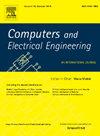可再生能源应用中辐照度和温度的无传感器估计:一项实验研究
IF 4.9
3区 计算机科学
Q1 COMPUTER SCIENCE, HARDWARE & ARCHITECTURE
引用次数: 0
摘要
本文介绍并研究了一种无传感器神经网络(NN)模型,用于精确估算与优化可再生能源系统相关的重要气候资源--辐照度和温度。有关这些变量的可靠数据在多个学科中都至关重要,尤其是在可再生能源领域,它推动着众多技术和经济目标的实现。然而,由于这些变量的动态性和可变性,实现精确、实时的估算仍然十分复杂。本研究提出了一种 NN 方法,该方法仅使用现代光伏(PV)系统的最大功率点(MPP)输出来估算辐照度和温度,无需直接进行传感器测量。这种方法不仅适应性强,还能无缝集成到现有的光伏基础设施中,实现实时、无成本的实施。为了严格验证该模型,我们在多天内进行了广泛的实验评估,证明了其准确性和弹性。该模型在辐照度和温度方面的平均绝对误差(MAE)分别为 0.87 和 2.728,均方根误差(RMSE)分别为 2.1127 和 9.1008。这些指标彰显了该模型的精确性和可靠性,使其成为提高可再生能源系统效率和智能的有力工具。这些发现为可再生能源的发展做出了重大贡献,为跨学科应用的实时气候资源估算提供了强大的无传感器解决方案,最终为更智能、更可持续的能源系统赋能。本文章由计算机程序翻译,如有差异,请以英文原文为准。
Sensorless estimation of irradiance and temperature for renewable energy applications: An experimental examination
This paper prescribes and examines a sensorless Neural Network (NN) model for the precise estimation of essential climatic resources-irradiance and temperature-integral to optimizing renewable energy systems. Reliable data on these variables is crucial across multiple disciplines, especially in renewable energy, where it drives numerous technical and economic objectives. However, achieving exact, real-time estimation remains complex, hindered by the dynamic and variable nature of these variables. This work proposes an NN approach that estimates irradiance and temperature using only the maximum power point (MPP) outputs from a modern photovoltaic (PV) system, eliminating the need for direct sensor measurements. This approach not only offers high adaptability but also integrates seamlessly into existing PV infrastructure, enabling real-time, cost-less implementation. To rigorously validate the model, extensive experimental evaluations were conducted across multiple days, demonstrating its accuracy and resilience. The model achieved a Mean Absolute Error (MAE) of 0.87 and 2.728 for irradiance and temperature, respectively; and a Root Mean Square Error (RMSE) of 2.1127 and 9.1008. These metrics highlight the model's precision and reliability, establishing it as a powerful tool for enhancing the efficiency and intelligence of renewable energy systems. The findings offer significant contributions to renewable energy development, providing a robust, sensorless solution for real-time climatic resource estimation with broad interdisciplinary applications, ultimately empowering smarter and more sustainable energy systems.
求助全文
通过发布文献求助,成功后即可免费获取论文全文。
去求助
来源期刊

Computers & Electrical Engineering
工程技术-工程:电子与电气
CiteScore
9.20
自引率
7.00%
发文量
661
审稿时长
47 days
期刊介绍:
The impact of computers has nowhere been more revolutionary than in electrical engineering. The design, analysis, and operation of electrical and electronic systems are now dominated by computers, a transformation that has been motivated by the natural ease of interface between computers and electrical systems, and the promise of spectacular improvements in speed and efficiency.
Published since 1973, Computers & Electrical Engineering provides rapid publication of topical research into the integration of computer technology and computational techniques with electrical and electronic systems. The journal publishes papers featuring novel implementations of computers and computational techniques in areas like signal and image processing, high-performance computing, parallel processing, and communications. Special attention will be paid to papers describing innovative architectures, algorithms, and software tools.
 求助内容:
求助内容: 应助结果提醒方式:
应助结果提醒方式:


